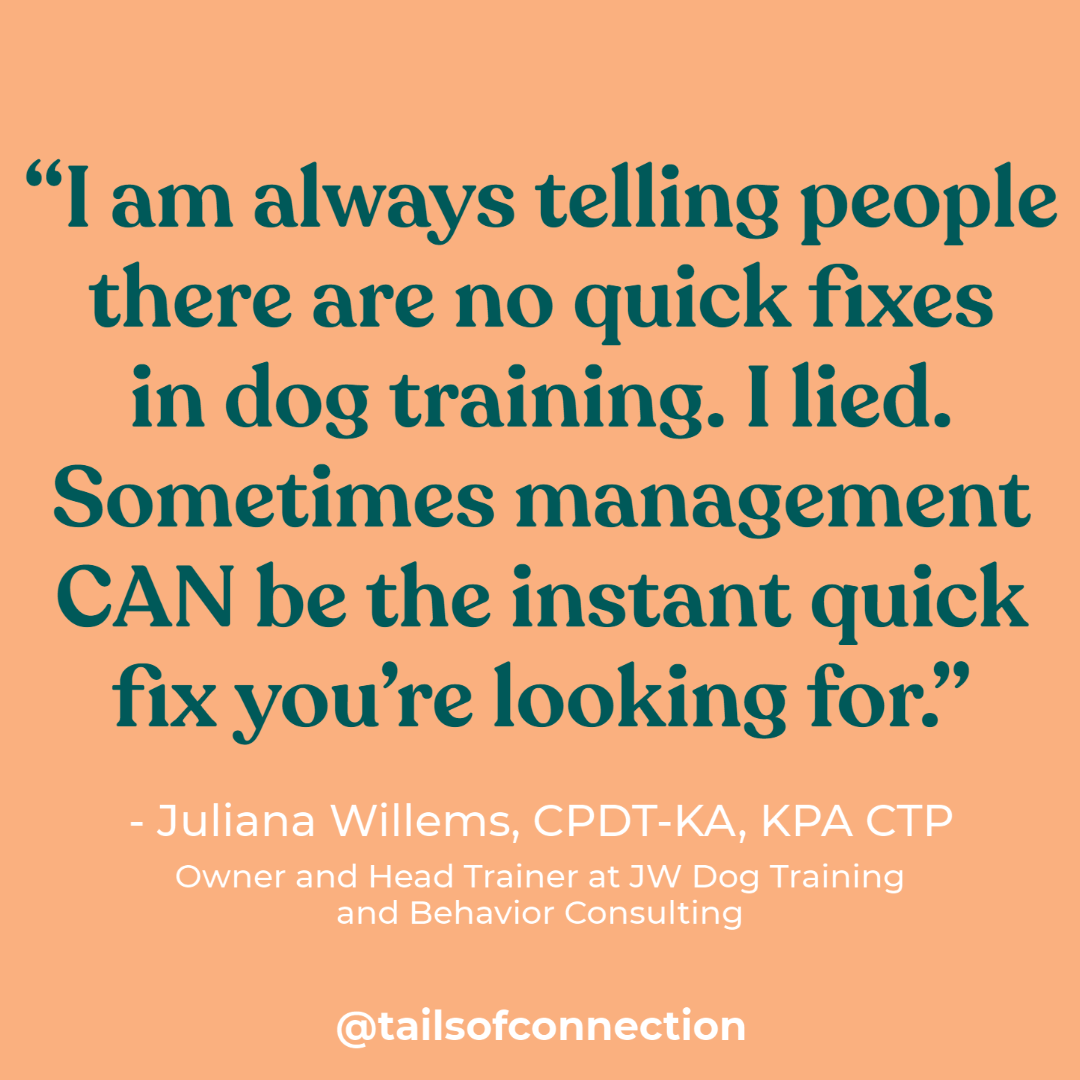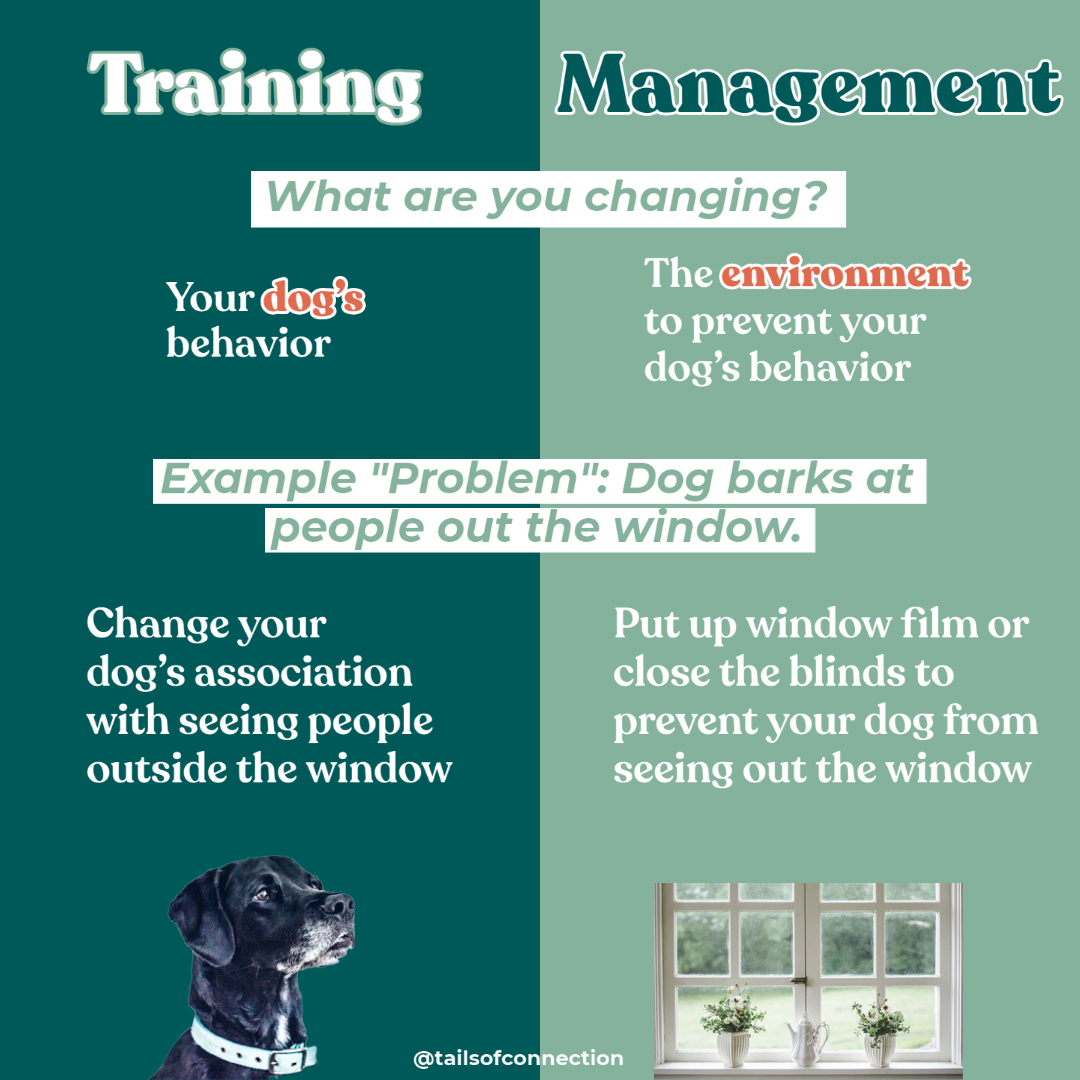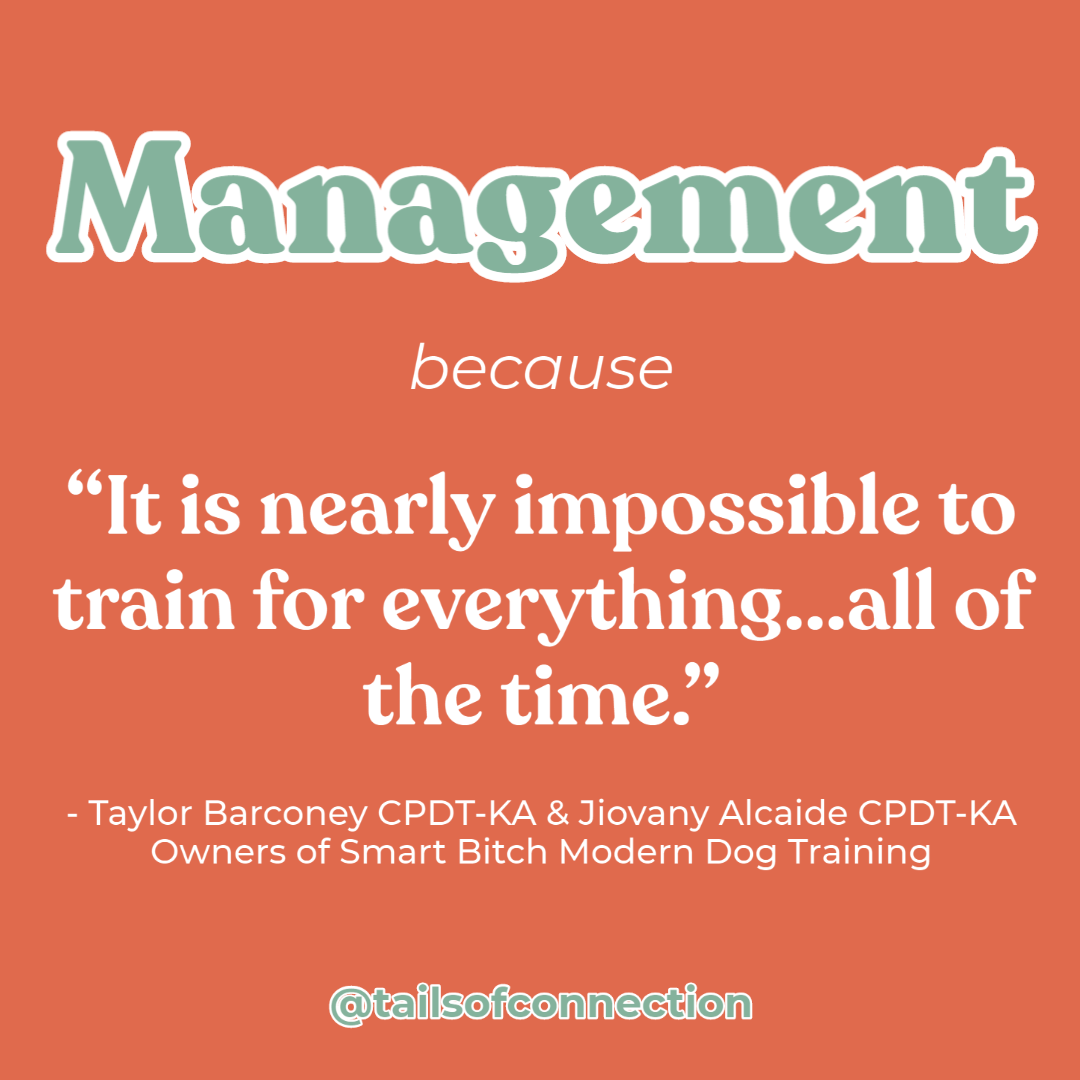Management: The Fastest Way to Train Your Dog to Stop Jumping, Counter Surfing, and More
While we get so excited when we see people share awesome behavior changes in their dogs, we know that changing behavior can take time. Have you ever noticed that you don’t often see posts of a cute dog behind a baby gate with a caption like this:
“Check it out! I put Fido behind a baby gate with a Kong when my friends came over, and voila, no barking or jumping on them! I am a genius - I solved the problem in under two minutes!”
As a dog community, we seem to spend more time sharing and cheering on behavior modification than we do management. We totally get it - behavior modification has more wow-factor (and can take a lot of work that is very much worth celebrating), but management is kind of the unsung hero of it all. You can’t get the behavior changes without it, and in many cases, you can simply eliminate the need for behavior modification altogether with it. We thought it would be fun to sing management’s praises and invite all of you to do the same (you can tag us on social media). We have teamed up with some amazing professional dog trainers to talk about what management is, why it is awesome, and how they use it in real life (we will be sharing many of their stories on our Instagram and Facebook pages).
What is management?
Management is changing the environment to decrease the likelihood a behavior occurs. Put simply: you set the environment up to avoid the issue altogether. With “training,” you are working to change or build a behavior (aka the dog is learning something), but with management, you are simply setting up the environment to prevent a specific behavior in the first place. For example, if your dog is afraid of people coming into your yard and barks at them, you can manage this by putting your dog away in a room where they will be calm before people arrive -- in doing this, you simply take away the trigger that causes the problem behavior. Looking at the same scenario, training (behavior modification) would be working to change your dog’s association with people coming into their yard until they aren’t afraid and therefore don’t bark. In real life, management is always a part of training plans, but there are plenty of situations where people simply decide to manage forever (and that is fine!). While management and “training” are different, it can be helpful to practice management scenarios or prep ahead of time, but remember, this practice and prep is not aimed at teaching a different behavior (just preventing one from happening).
When and how should you use management?
You can think about how and when you will use management in two buckets:
Any good training plan includes management. One of the most important steps to changing unwanted behavior is preventing the rehearsal of the behavior. Every time your dog practices the behavior you're trying to change, progress is being delayed. (As our friends at Smart Bitch Dog Training point out, management can also be incredibly important in making sure all of the training work you did sticks - we don’t need to make life harder for our dogs!).
Sometimes management solves the problem more quickly and easily than training would. Some people simply do not have the time, energy, resources etc. to train away a problem. Management can provide an effective solution that works for everyone (you, your dog, your family, etc.).
There are some important things to remember with management:
Your desire to use management involves some personal preference. Some people manage very strictly. Some people think it is a cop out (note: other people don’t get to define this for you!). You get to decide how much you want to focus on it. We think good management is worth celebrating!
Management can be temporary while you're working on a problem, or it can be permanent if everyone is living happily with it.
Not all management solutions will work for every dog. You need to find what works for your individual dog.
You don’t want management to be stressful or aversive to your dog (then it becomes training, and not good training at that). For example, if you put your dog away in a room when a repair person comes over and they just go nuts barking in there for 30 minutes, that is actually teaching your dog more problem behaviors (because remember, management is preventing the problem behavior to begin with).
If you're removing the opportunity for a behavior that served a purpose for your dog -- like entertainment, exercise, etc. -- make sure they get that need met in another way (e.g. restrict access to furniture to avoid chewing and give appropriate chewing outlets to fill that need).
Keep reading below for ideas about how to incorporate management into your training routine with your dog. You can share how management is a part of your life by tagging @tailsofconnection and using the hashtag #TOCmanagementseries on Instagram and Facebook.
Here are some real-life ways to problem solve using management
Management and training are both great and necessary (and often complementary) options in living with dogs. Management should always be a part of any behavior modification plan, but you don't always have to change behavior if management is doing a good job at preventing it and isn't causing you or your dog stress. It is also important to factor in your dog’s nature when thinking about how to use management in your life with your dog. There are certain things that are part of who that dog is and would be incredibly difficult to train away completely without any risks (for example, many dogs make amazing progress with resource guarding but will always have to be managed to avoid any issues -- and that is normal and okay!). Below, we have listed some common problems people face with dogs along with some potential ways you could manage and/or train the problem. Remember, this is not an exhaustive list; it is simply here to help paint a picture of how to think about both management and behavior modification when faced with a problem.
How do I stop my dog from incessantly barking out the window?
Management (immediate solution):
Close the blinds so your dog cannot see the things that make them bark
Put window film on the windows so your dog cannot see the things that make them bark
Training (longer term solution):
Potential rephrasing of the problem: How do I help my dog feel neutral about the triggers outside the window? How do I teach my dog to run to their bed when they see the mailperson appear?
Ideas:
Desensitize and countercondition triggers outside the window so that your dog is no longer triggered when seeing things outside the window
Work on cue transfer so that certain triggers actually tell your dog to go to bed. They may still let out a little bark, but then they will disengage and go to bed.
How do I stop my dog from counter surfing?
Management (immediate solution):
Block off the kitchen with a gate to prevent your dog from being able to access the counters
Don’t ever leave any food out on the counters or tables.
Training (longer term solution):
Potential rephrasing of the problem: How do I teach my dog to stay out of the kitchen? How do I teach my dog to go to their bed if they find food on the counter?
Ideas:
Teach your dog a “boundary” (aka teach them to stay out of the kitchen)
Put food on the counter on a stimulus control, so your dog defaults to a different behavior (like going to find you or going to their bed) when they find food on the counter.
How do I stop my dog from jumping?
Management (immediate solution):
Put your dog behind a baby gate if you have guests over until they calm down enough to greet the person.
Supervise all greetings closely and coach visitors on what to do.
Training (longer term solution):
Potential rephrasing of the problem: How do I teach my dog to greet people with all paws on the floor?
Ideas:
Train them to greet people with all paws on the floor by practicing controlled setups where you consistently and rapidly reward the dog for paws on the floor. You can start to make your setups more exciting (and therefore more difficult), but remember, you want your dog to succeed.
How do I prevent my dog from running away from me?
Management (immediate solution):
Use long lines to give your dog the ability to move around freely in nature while also keeping them safe.
Training (longer term solution):
Potential rephrasing of the problem: How do I teach my dog to stay relatively near me and check back in automatically? How do I teach my dog to come when called?
Ideas:
Capture offered attention to help build an auto check-in behavior.
Train a solid recall.
How do I get my dog to stop barking at skateboarders?
Management (immediate solution):
Avoid areas where skateboarders are likely to be.
Distract your dog the moment you notice a skateboarder until they are gone.
Have a rehearsed u-turn move you can do with your dog the moment you see one.
Training (longer term solution):
Potential rephrasing of the problem: How do I get my dog to feel calm around skateboarders? How do I get my dog to look at me after seeing a skateboarder?
Ideas:
Work under your dog’s threshold to counter condition your dog to skateboards.
How do I prevent my puppy from going potty inside the house?
Management (immediate solution):
Proactively take your puppy outside to go potty frequently.
Supervise your puppy, so you can scoop them up and take them out if they look like they are searching for a spot to potty inside.
Use crates, pens, and tethers (only use tethers if you are home) if you cannot closely supervise your puppy.
Training (longer term solution):
Potential rephrasing of the problem: How do I teach my dog to go to the bathroom outside?
Ideas:
Create a potty training program for your house where you take the dog out regularly and reward him for going potty.
How do I stop my dog from chewing my shoes?
Management (immediate solution):
Don’t leave shoes in a spot that is accessible to your dog.
Training (longer term solution):
Potential rephrasing of the problem: How do I teach my dog to chew on their own things instead of shoes?
Ideas:
Play a “this or that” game with a toy and shoes. Only reward the dog for choosing the toy.
Teach an implied leave it with shoes.
To learn more management strategies from five professional trainers, check out our @tailsofconnection Instagram account all this week.
PS: Pin this article for later!







